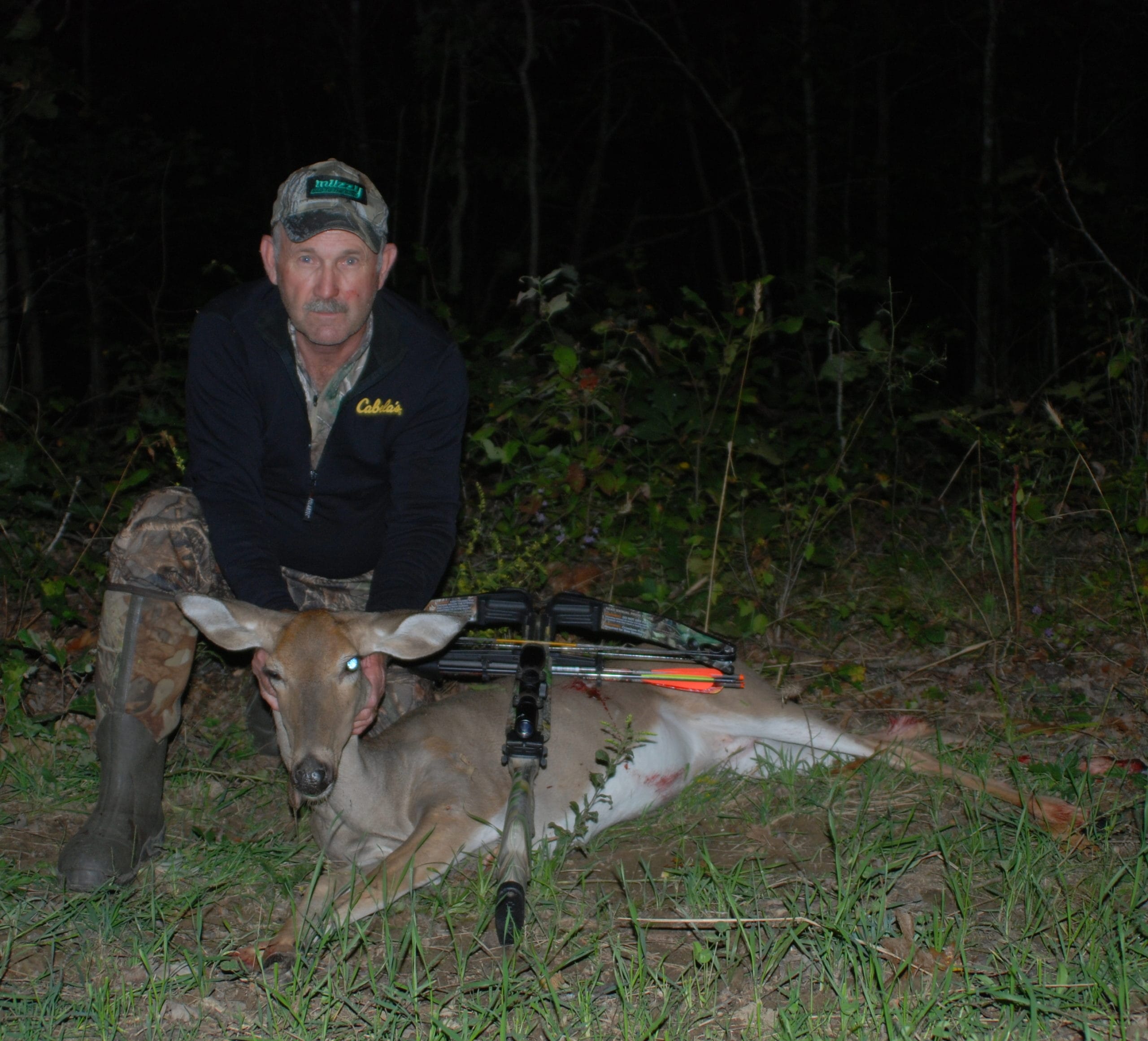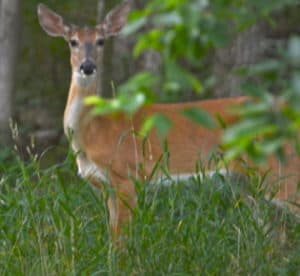by Bill Cooper
The sunshine of a late October afternoon had faded away. Now, cool air settled into the hillside flat where my ground blind was situated. I pulled on a heavy shirt to combat the chill.

Removing the dominant doe from a deer herd renders the remaining deer easier to hunt. They are not accustomed to making decisions that are typically dictated by the dominant female.
Suddenly, a “whew, whew!” sound loudly echoed through the woods. The dominant doe of a small group of deer that regularly used my food plot had busted me and was blowing that white-tailed deer alarm call all hunters hate to hear.
Experience had taught me to sit tight. The deer had not been badly spooked and would most likely return.
Less than 20 minutes later, I heard the unmistakable sounds of deer walking in the dry oak leaves east of my blind. Sounds of acorns crunching assured me that the band of does had calmed down and once again felt safe, and they were feeding my way.
With the aide of my binoculars, I caught movement. The dominant doe lead the pack, as usual. She stepped into the food plot first, 35 yards away.
Two more does fed into the far end of the food plot. All of the does fed behind a 5-point buck, making it impossible for me to get a shot with my crossbow. The big doe closest to my blind obviously served as the boss doe of the herd. Her blocky body supported a long, strong neck and a “mule head” with a Roman nose. She portrayed the perfect example of a dominant doe.
The dominant doe kept snapping her head to the alert position and staring at my blind. The other deer never looked my direction. I knew it would only be a short period of time before the big doe would bust me again.

Their blocky heads, long faces, Roman nose and vigilant alertness distinguish a dominant doe from younger female deer in a group.
Her nervous demeanor intensified as she fed across the food plot. Ten minutes after entering the plot, her rump hairs began to flare. She curled her lip and licked her nostrils, testing the air for any telltale signs of danger. She slowly raised her long flag to full mast, and it tick-tocked as she slowly headed back across the food plot. All of her subordinates followed suit. Busted again.
I still sat tight, hoping for one more reprieve from the curse of the old doe before nightfall enveloped the food plot. With 10 minutes of daylight left, boss doe returned for the third time. The 5-pointer returned as well. It stared to the south. Soon, a respectable 11-point buck sauntered across the far end of the food plot and turned into the brushy area with the other deer. I recognized the big buck from trail camera photos.
The light slowly faded away. I enjoyed an especially smug feeling at having enjoyed an afternoon in a ground blind with deer very nearby. I also laid a plan for the next day. I would set up another blind closer to the point where the dominant doe entered the food plot, and she was on my hit list. Taking that dominant doe would make future hunts on that food plot much more productive, maybe even giving me a better chance at the 11-point buck.
Rifle hunters with multiple anterless deer tags can often make multiple kills by shooting the dominant doe first. Subordinate does often will freeze because they are not accustomed to making decisions. The extra seconds allow for a second shot. Even if the subordinates deer run, stay prepared. They may not go far.
If you hunt the dominate doe in a given area, I believe you also greatly improve your chances of seeing the dominant buck in the area. Watch where the dominant doe enters and leaves feeding areas. Follow trails to her bedding area, which will usually be much thicker vegetation. Next, determine how the buck travels from his security area to that of the dominant doe. Look for weedy ditches, saddles, brushy draws, light rub lines and dark timber.
I set my second ground blind early the next afternoon and entered it around 5 p.m. The dominant doe came from the east like clock work. However, she spotted the new blind and busted me again. Fifteen minutes later I heard her leading her troupe around the new blind to the north.
Within 10 minutes the old boss female fed within 30 yards of my new blind, but I did not have a shot. Curiosity finally got the best of her. She circled and hooked into the brush-screened spot at the east end of the food plot. She paused, broadside, at 20 yards to inspect the blind closer.
By removing the dominate doe from the herd, I had accomplished several goals we had for this particular property. First, this area was overpopulated with deer, and taking the dominant doe helped that situation by taking out the most reproductive doe. Second, I took out the leader, leaving the other deer more vulnerable until they learned the ropes. Third, I eliminated the most cautious deer of the herd. There’s no doubt that without that dominant doe around, my chances for taking another deer, maybe even a big buck, were greater on subsequent hunts. Fourth, I put tenderloins and many pounds of meat in the freezer. And finally, I had a great time outdoors executing my well laid plans.
Pay attention, and you’ll be able to spot and identify the dominant doe. If you have any of the same goals listed above, taking that dominant doe may be your best option when deciding which deer to shoot.
The Union Sportsmen’s Alliance website is designed to provide valuable articles about hunting, fishing and conservation for members of AFL-CIO affiliated labor unions and all sportsmen and sportswomen who appreciate hunting and fishing and want to preserve our outdoor heritage for future generations. If you would like your own story and experience from the outdoors to be considered for our website, please email us at [email protected].








